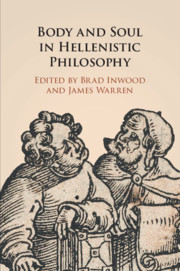230 results
A Morphological Study of Selected Synthetic Clays by Electron Microscopy
-
- Journal:
- Clays and Clay Minerals / Volume 16 / Issue 4 / August 1968
- Published online by Cambridge University Press:
- 01 July 2024, pp. 271-274
-
- Article
- Export citation
Chapter 3 - Early Learning in Plato, Republic 7
-
-
- Book:
- Conceptualising Concepts in Greek Philosophy
- Published online:
- 25 April 2024
- Print publication:
- 02 May 2024, pp 56-73
-
- Chapter
- Export citation
Effects of Acidification on the Chemical Composition and Layer Charge of Smectite from Calcareous Till
-
- Journal:
- Clays and Clay Minerals / Volume 40 / Issue 6 / December 1992
- Published online by Cambridge University Press:
- 28 February 2024, pp. 731-739
-
- Article
- Export citation
P37: A systematic review on inequalities in accessing and using social care in dementia – from pre- and pandemic times to moving beyond
-
- Journal:
- International Psychogeriatrics / Volume 35 / Issue S1 / December 2023
- Published online by Cambridge University Press:
- 02 February 2024, pp. 238-239
-
- Article
-
- You have access
- Export citation
A systematic review on inequalities in accessing and using community-based social care in dementia
-
- Journal:
- International Psychogeriatrics , First View
- Published online by Cambridge University Press:
- 12 May 2023, pp. 1-24
-
- Article
- Export citation
Unsparing self-critique strengthens the field, but Bailey et al. overstate the ‘problems with delay discounting’
-
- Journal:
- Psychological Medicine / Volume 53 / Issue 4 / March 2023
- Published online by Cambridge University Press:
- 28 February 2022, pp. 1658-1659
-
- Article
-
- You have access
- Open access
- HTML
- Export citation
Incursion of H5N8 high pathogenicity avian influenza virus (HPAIV) into gamebirds in England
-
- Journal:
- Epidemiology & Infection / Volume 150 / 2022
- Published online by Cambridge University Press:
- 10 February 2022, e51
-
- Article
-
- You have access
- Open access
- HTML
- Export citation
Delirium, depression, and long-term cognition
-
- Journal:
- International Psychogeriatrics / Volume 35 / Issue 8 / August 2023
- Published online by Cambridge University Press:
- 12 November 2021, pp. 433-438
-
- Article
- Export citation
Chapter 6 - Socrates and the Symmetry Argument
-
-
- Book:
- Immortality in Ancient Philosophy
- Published online:
- 20 May 2021
- Print publication:
- 03 June 2021, pp 143-160
-
- Chapter
- Export citation
Rates of treatment-resistant schizophrenia from first-episode cohorts: systematic review and meta-analysis
-
- Journal:
- The British Journal of Psychiatry / Volume 220 / Issue 3 / March 2022
- Published online by Cambridge University Press:
- 11 May 2021, pp. 115-120
- Print publication:
- March 2022
-
- Article
-
- You have access
- HTML
- Export citation
Bibliography
-
- Book:
- Body and Soul in Hellenistic Philosophy
- Published online:
- 20 May 2020
- Print publication:
- 11 June 2020, pp 231-251
-
- Chapter
- Export citation
Copyright page
-
- Book:
- Body and Soul in Hellenistic Philosophy
- Published online:
- 20 May 2020
- Print publication:
- 11 June 2020, pp iv-iv
-
- Chapter
- Export citation
Contents
-
- Book:
- Body and Soul in Hellenistic Philosophy
- Published online:
- 20 May 2020
- Print publication:
- 11 June 2020, pp v-v
-
- Chapter
- Export citation
Contributors
-
- Book:
- Body and Soul in Hellenistic Philosophy
- Published online:
- 20 May 2020
- Print publication:
- 11 June 2020, pp vi-vi
-
- Chapter
- Export citation
Introduction
-
-
- Book:
- Body and Soul in Hellenistic Philosophy
- Published online:
- 20 May 2020
- Print publication:
- 11 June 2020, pp 1-8
-
- Chapter
- Export citation
Subject Index
-
- Book:
- Body and Soul in Hellenistic Philosophy
- Published online:
- 20 May 2020
- Print publication:
- 11 June 2020, pp 262-266
-
- Chapter
- Export citation
Abbreviations
-
- Book:
- Body and Soul in Hellenistic Philosophy
- Published online:
- 20 May 2020
- Print publication:
- 11 June 2020, pp vii-viii
-
- Chapter
- Export citation
Index Locorum
-
- Book:
- Body and Soul in Hellenistic Philosophy
- Published online:
- 20 May 2020
- Print publication:
- 11 June 2020, pp 252-261
-
- Chapter
- Export citation

Body and Soul in Hellenistic Philosophy
-
- Published online:
- 20 May 2020
- Print publication:
- 11 June 2020
Gender differences in facial emotion recognition in persons with chronic schizophrenia
-
- Journal:
- European Psychiatry / Volume 22 / Issue 2 / March 2007
- Published online by Cambridge University Press:
- 16 April 2020, pp. 116-122
-
- Article
- Export citation



